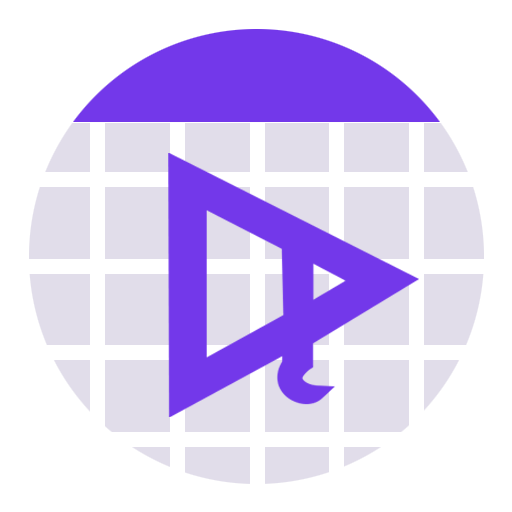NodeJS & Nest-AI-powered NodeJS & Nest solutions
AI-driven backend solutions for developers
How do I integrate Prisma with NestJS?
What's the best way to handle errors in Node.js?
Can you help me optimize my NestJS application?
Explain the relationship between NestJS and Node.js.
Related Tools
Load More
NodeJS Copilot
⭐️ 4.4ㆍYour personal Node.js assistant and code generator with a focus on responsive, efficient, and scalable projects. Write clean code in Node and become a much faster developer.

NestJS Copilot
Your personal NestJS assistant and code generator with a focus on responsive, efficient, and scalable projects. Write clean code and become a much faster developer.

NextJS
⭐️ 4.2ㆍAdvanced Next.js 14, 13 & 12 Typescript/JS copilot [+ App Router], assistant and project generator with a focus on responsive, beautiful, and scalable UI. Write clean code and become a much faster developer.

Node Mentor
Expert in full-stack Node.JS, Javascript, Typescript and Node Frameworks. Will guide you with CSS, TailWinds, JS, TS, React, Vue, Express, Koa and much more.

Node.js & Express.js Pro
Node.js and Express.js programming expert, helpful and detailed.

NestJS Guru
NestJS expert providing guidance and problem-solving for Node.js applications
20.0 / 5 (200 votes)
Detailed Introduction to NodeJS & NestJS
Node.js is a runtime environment that allows JavaScript to be executed on the server side. It is built on the V8 JavaScript engine and is known for its non-blocking, event-driven architecture, which makes it ideal for building scalable and efficient network applications. NestJS, on the other hand, is a progressive Node.js framework that leverages TypeScript and is designed to build scalable and maintainable server-side applications. It incorporates the best practices from different programming paradigms and frameworks such as Angular, and it provides a structured way to organize and develop backend applications. For example, Node.js can be used to create a simple HTTP server that listens to requests and sends back responses. NestJS, with its powerful CLI and modular architecture, can be used to build a complex microservices architecture where each service is a separate module, making the application easier to manage and scale.

Main Functions of NodeJS & NestJS
Event-Driven Architecture
Example
Node.js uses an event-driven, non-blocking I/O model, which makes it lightweight and efficient for real-time applications. This is particularly useful for applications that require a persistent connection between the server and client, such as chat applications or online gaming.
Scenario
A real-time chat application where multiple users can communicate with each other simultaneously. The event-driven model allows the server to handle multiple connections at the same time without being bogged down by individual request/response cycles.
Microservices and Modular Development
Example
NestJS allows developers to structure their applications in a modular way, promoting code reusability and separation of concerns. Each module can encapsulate a feature or functionality, which can be independently developed and tested.
Scenario
An e-commerce application where different modules handle different aspects of the system, such as user authentication, product catalog, and order processing. Each module can be developed and maintained by different teams, ensuring clear boundaries and responsibilities.
TypeScript Support
Example
NestJS is built with TypeScript, providing type safety and advanced features such as decorators and metadata, which enhance code quality and developer productivity.
Scenario
A RESTful API where TypeScript's strong typing helps catch errors at compile time, leading to more robust and maintainable code. Decorators are used to define routes, middleware, and services, making the code more readable and expressive.
Ideal Users of NodeJS & NestJS
Full-Stack Developers
Full-stack developers who are familiar with JavaScript or TypeScript can leverage NodeJS and NestJS to build both frontend and backend applications. The ability to use a single language across the stack simplifies development and allows for easier code sharing and maintenance.
Enterprises and Large-Scale Projects
Enterprises that require scalable and maintainable solutions can benefit from NestJS's modular architecture and powerful CLI. Its support for microservices and GraphQL makes it ideal for large-scale projects where different teams handle various parts of the application.

Using NodeJS & Nest
1. Visit aichatonline.org for a free trial without login, also no need for ChatGPT Plus.
This is your starting point to access powerful AI tools without any login or subscription requirements.
2. Install NodeJS and NestJS
Ensure you have NodeJS installed on your machine. Install NestJS globally using npm: `npm install -g @nestjs/cli`.
3. Create a New NestJS Project
Use the NestJS CLI to create a new project: `nest new project-name`. Follow the prompts to set up the project structure.
4. Configure Your Project
Set up your project by configuring modules, controllers, and services. Integrate Prisma for database management by installing the Prisma CLI and creating your data model.
5. Run and Test Your Application
Start your NestJS application using `npm run start`. Test endpoints using tools like Postman or integrate with frontend applications.
Try other advanced and practical GPTs
Electromagnetism Professor
Your AI-powered electromagnetism expert.

Ciberseguridad -CISO- Seguridad de la Información
AI-powered Cybersecurity Solutions for All

Tangent Magic Calendar
AI-Powered Creativity for Every Month

Social Media Calendar
AI-powered social media scheduler

Rouse Nexus - AI Philosopher
AI-powered philosopher and ethical guide.

Gestionnaire d'Investissement Financier en Bourse
AI-Powered Investment Insights & Alerts

FunkoPoP-Like Creator!
Transform your photos into toy-like figures with AI

CV Designer
AI-Powered CV Customization Tool

Research Article Summarizer
AI-powered summaries for your research articles

Presentaciones PowerPoint
AI-powered Presentation Assistance

Juridisk Mentor
AI-powered legal insights and guidance.

Ethers v6
AI-powered Ethereum development made easy.

- Authentication
- Microservices
- Real-Time
- APIs
- GraphQL
NodeJS & Nest Q&A
What are the prerequisites for using NestJS?
You need to have NodeJS installed. Familiarity with TypeScript is beneficial, as NestJS uses it extensively. Basic understanding of Express.js and dependency injection will also help.
How do you integrate Prisma with NestJS?
First, install Prisma and its client: `npm install prisma @prisma/client`. Initialize Prisma with `npx prisma init`. Define your data model in the `schema.prisma` file, then run `npx prisma migrate dev` to create the database structure.
What are common use cases for NestJS?
NestJS is used for building scalable server-side applications. Common use cases include RESTful APIs, microservices, GraphQL APIs, and real-time applications with WebSockets.
How do you handle authentication in a NestJS application?
Use the `@nestjs/passport` and `@nestjs/jwt` packages. Implement strategies using Passport.js and JWTs for authentication. Create guards to protect routes and ensure secure data handling.
What are some best practices for NestJS development?
Use modular architecture to keep the codebase maintainable. Leverage dependency injection to manage dependencies. Write unit and integration tests to ensure code reliability. Utilize middleware for cross-cutting concerns like logging and validation.